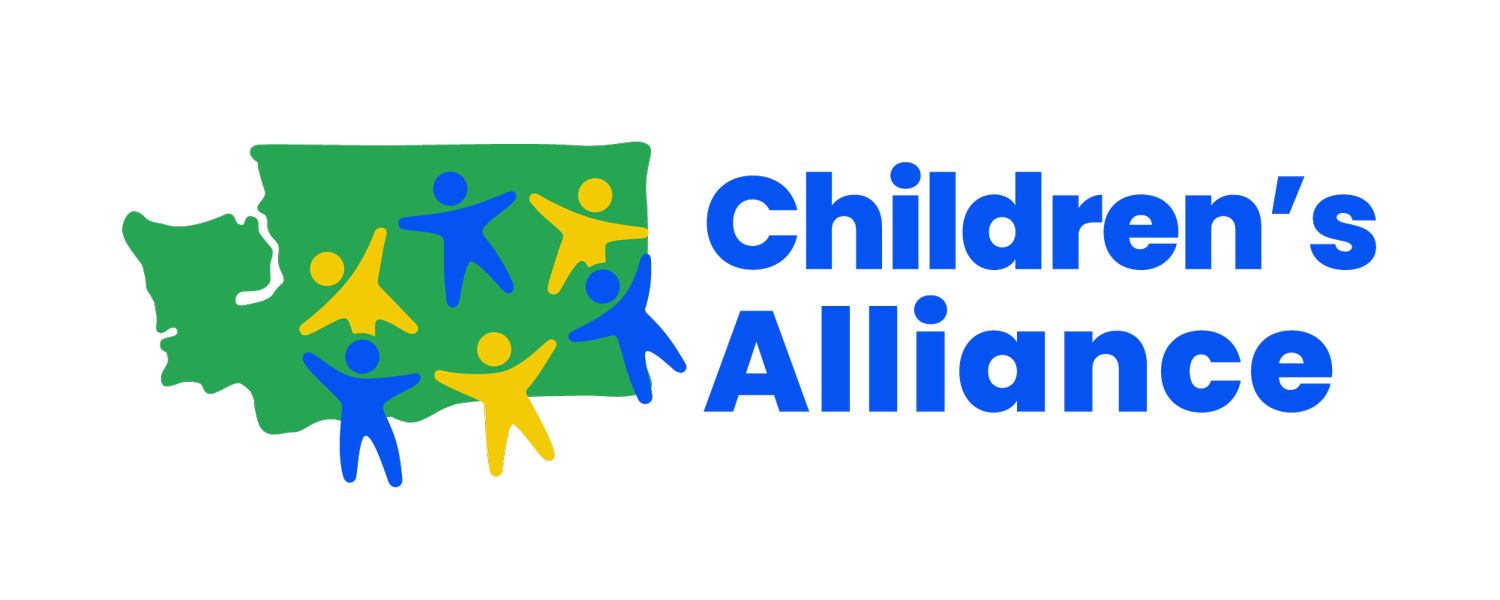When Systems Fail: The Rising Cost of Inequity for Washington’s Children
In Washington state, a child’s chance to thrive still depends on their family’s race and income. Now, federal policy decisions threaten to widen existing disparities and opportunity gaps, cutting off lifelines families rely on to survive and succeed.
Food insecurity hits hardest in communities of color
Food is the foundation of health and learning. Yet, across the state, families are skipping meals so their children can eat. Recent data shows that one in six Washington households with children depends on Basic Food—Washington’s SNAP program—to put food on the table. In rural communities, that number is even higher—sometimes triple.
As we know, sweeping federal cuts are on the horizon. A staggering $186 billion cut to SNAP nationally means families in Washington face drastic reductions. These cuts don’t affect everyone equally. While roughly 10% of children in Washington live in poverty, that rate climbs to 21% for Black children, 17% for Latino children, and 16% for Indigenous children. In some counties, like Yakima and Ferry, up to one out of every four children lives in poverty.
When food budgets shrink, children in these communities bear the greatest burden. Hunger during critical developmental years can lead to lasting impacts on physical and cognitive growth, school performance, and overall well-being.
Health care cuts put children’s lives at risk
Nutrition is only one part of the puzzle. Access to health care is another critical piece. Federal Medicaid cuts looming over Washington threaten to strip coverage from up to 250,000 residents, many of whom are children.
Medicaid is often the only source of health care for families with low incomes, covering everything from well-child visits and immunizations to treatment for chronic illnesses and mental health care. In rural communities, where health care options are already limited, these cuts risk shutting down vital hospitals and clinics, particularly those that serve families with low incomes, as well as large Tribal and immigrant communities.
When children lose health coverage, they miss out on preventive care, face a higher risk of worsening illnesses, and face barriers to early intervention that could change the course of their lives. For Black, Latino, and Indigenous children, who already face systemic barriers to health care, these cuts deepen disparities and threaten their futures.
These numbers represent more than statistics; they’re the lived realities of Washington families
Imagine parents in Yakima working multiple jobs, worried if SNAP cuts will force them to choose between rent and food. Picture a rural community like Toppenish where the closest hospital may close, leaving families hours from urgent care. Think of classrooms where children come to school hungry, without the support they need to succeed.
The consequences ripple across generations. Children growing up in poverty and food insecurity face higher risks of chronic health conditions, fewer academic opportunities, and reduced economic mobility.
The path forward requires that we center equity
Washington has the tools to lead differently. Policies like the Working Families Tax Credit, free school meals, and investments in early learning are proven to shrink racial and economic disparities — but only if they’re protected and strengthened.
If we really want every child in Washington to thrive, we have to fight for the programs that make that possible.
Here’s what you can do to get ready for the 2026 legislative session
Washington’s children deserve more than resilience; they deserve justice. As cuts threaten to pull the safety nets away, the time to act is now. The 2026 legislative session is just five months away, and it’s our chance to demand bold action that centers racial and economic justice so that a child’s well-being is not dependent on their race, family income, or ZIP code.
Here’s how you can prepare:
Stay informed about how proposed policies impact kids and communities of color.
Connect with local advocacy groups like Children’s Alliance that are championing equitable investments.
Reach out to your legislators early to share your stories and priorities.
Join community forums and town halls to amplify your voice and build collective power.
Our kids’ futures depend on a legislature that protects existing investments in early learning and health care and strengthens the policies that guarantee every child access to the resources they need to thrive.
Going into the 2026 legislative session, Children’s Alliance will be working with community members and coalitions to advocate for policies that protect early learning and health care, and we will fight against cuts that disproportionately harm children and families of color, as well as all Washingtonians furthest from opportunity.
Your voice can make a difference. Stay informed, engage with local organizations, and reach out to your elected officials to ensure that the needs of children and families are prioritized in the upcoming session. Start now.
